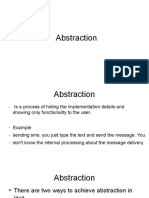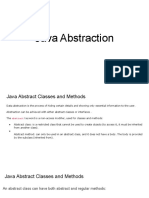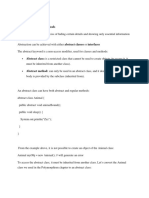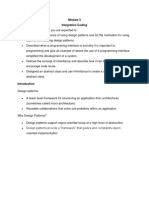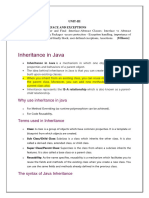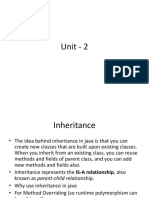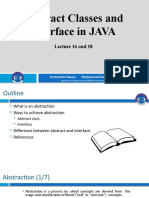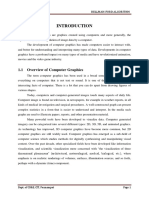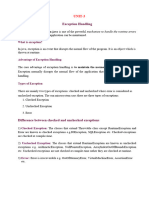0% found this document useful (0 votes)
16 views9 pagesAbstraction & Encapsulation JAVA KT
The document explains the concepts of abstraction and encapsulation in Java, highlighting how abstraction allows for hiding implementation details through abstract classes and interfaces. It provides examples of both abstract classes and interfaces, illustrating their usage and benefits, such as supporting multiple inheritance and promoting loose coupling. Additionally, it contrasts encapsulation, which focuses on data hiding and grouping data with methods, with abstraction, which emphasizes the separation of interface from implementation.
Uploaded by
VARNITHA PCopyright
© © All Rights Reserved
We take content rights seriously. If you suspect this is your content, claim it here.
Available Formats
Download as PDF, TXT or read online on Scribd
0% found this document useful (0 votes)
16 views9 pagesAbstraction & Encapsulation JAVA KT
The document explains the concepts of abstraction and encapsulation in Java, highlighting how abstraction allows for hiding implementation details through abstract classes and interfaces. It provides examples of both abstract classes and interfaces, illustrating their usage and benefits, such as supporting multiple inheritance and promoting loose coupling. Additionally, it contrasts encapsulation, which focuses on data hiding and grouping data with methods, with abstraction, which emphasizes the separation of interface from implementation.
Uploaded by
VARNITHA PCopyright
© © All Rights Reserved
We take content rights seriously. If you suspect this is your content, claim it here.
Available Formats
Download as PDF, TXT or read online on Scribd
/ 9




